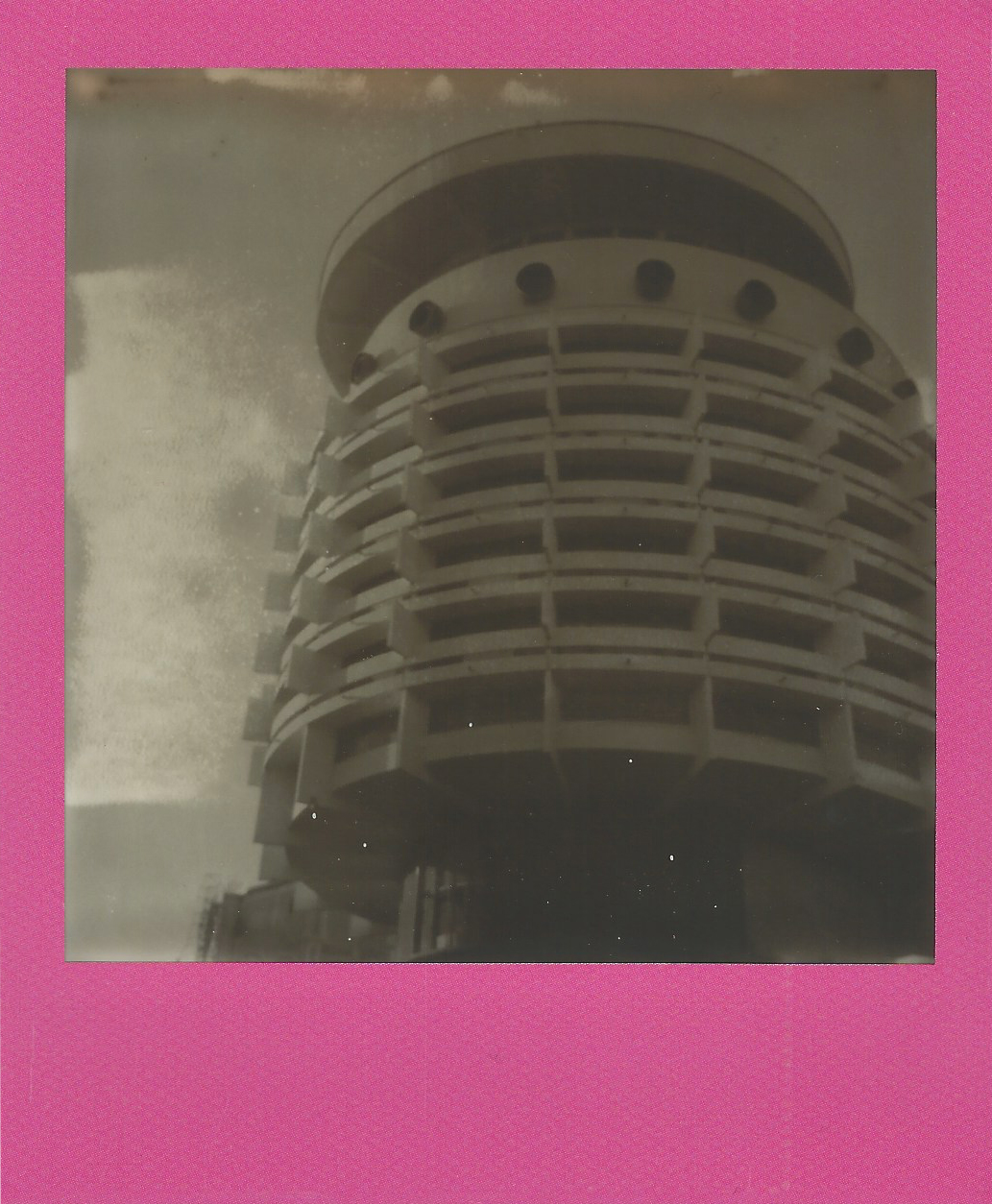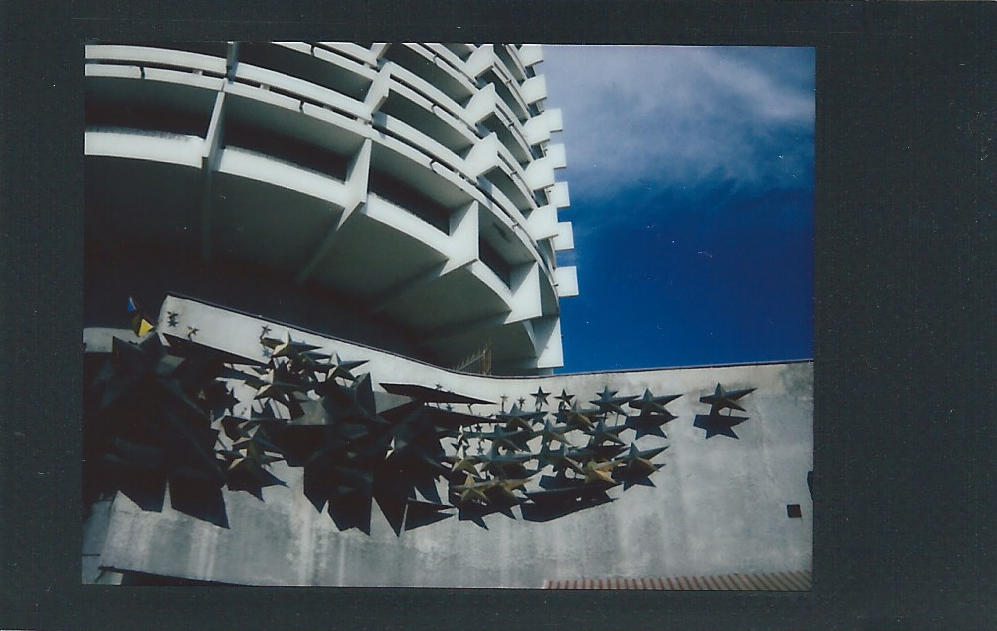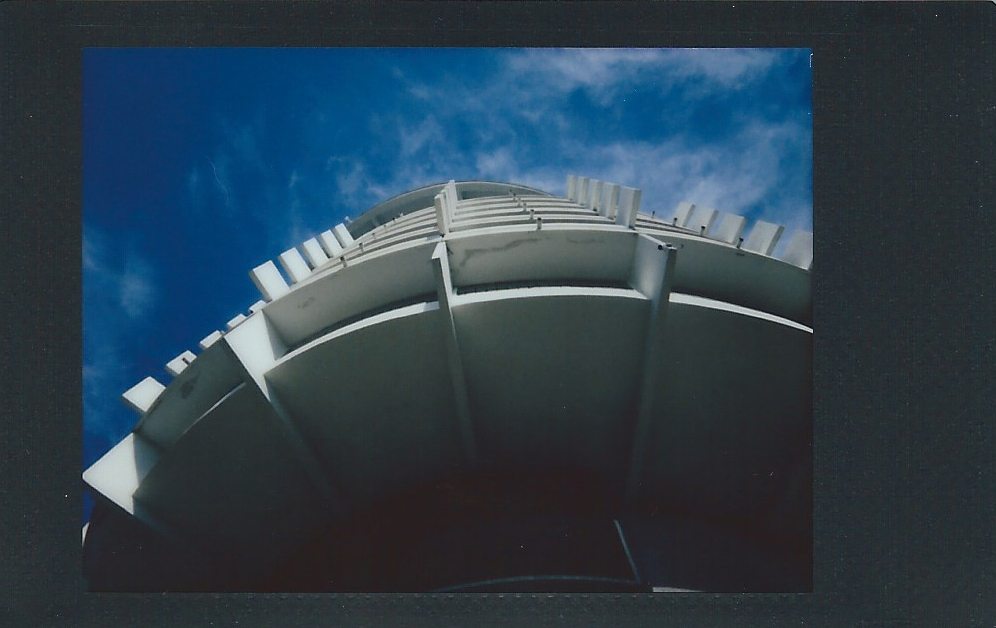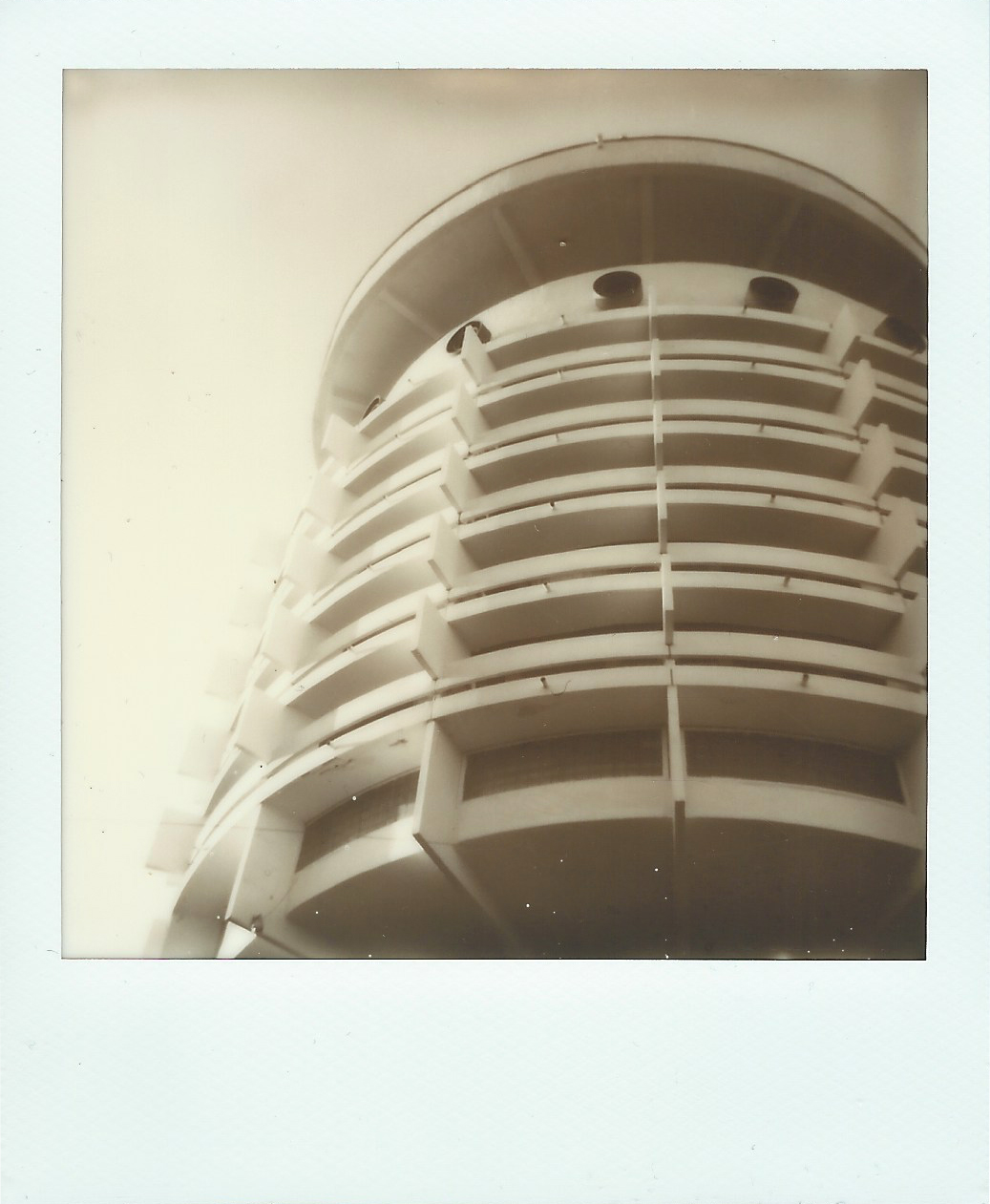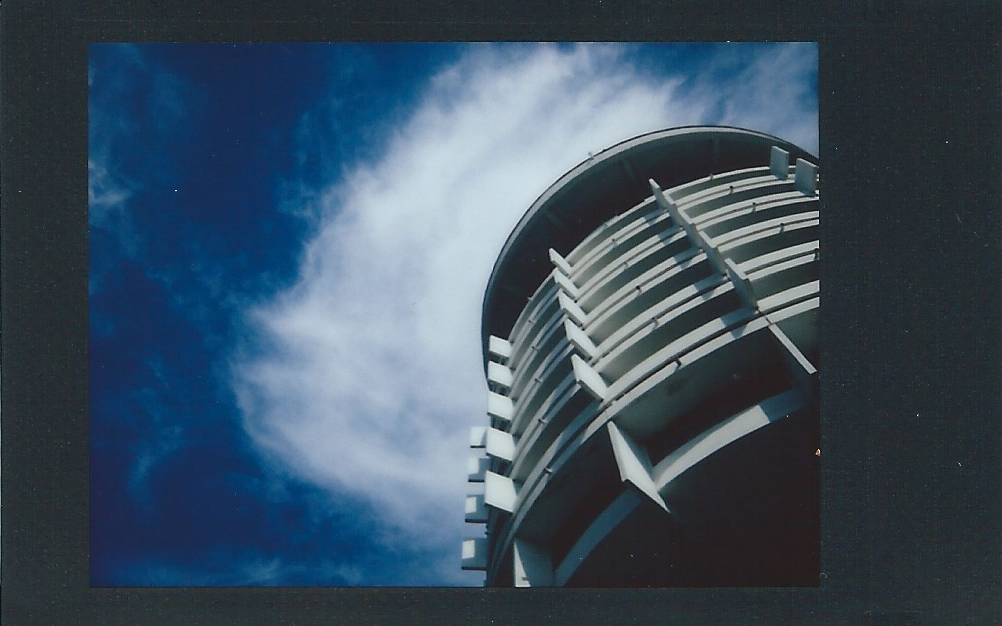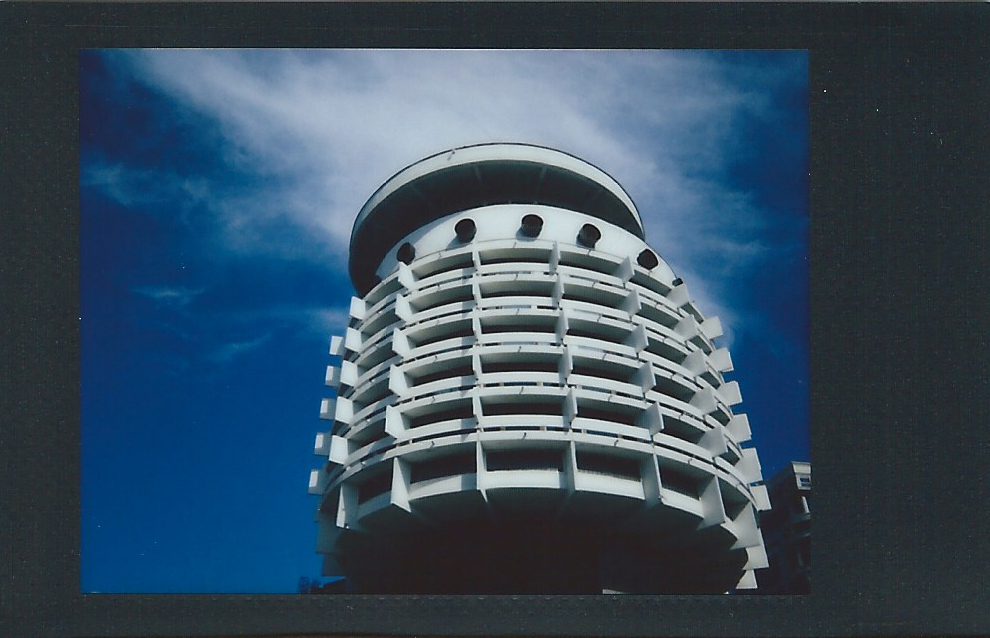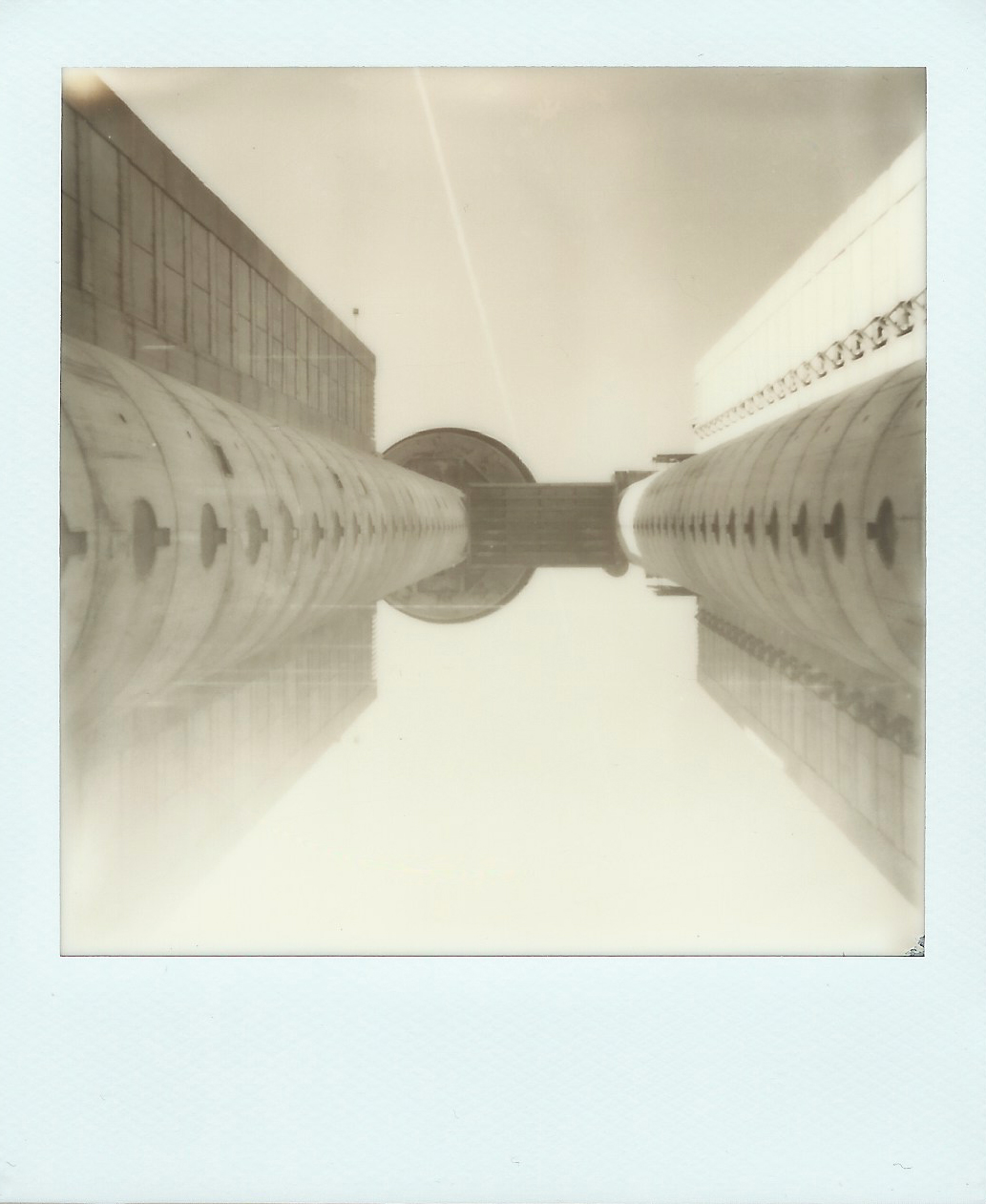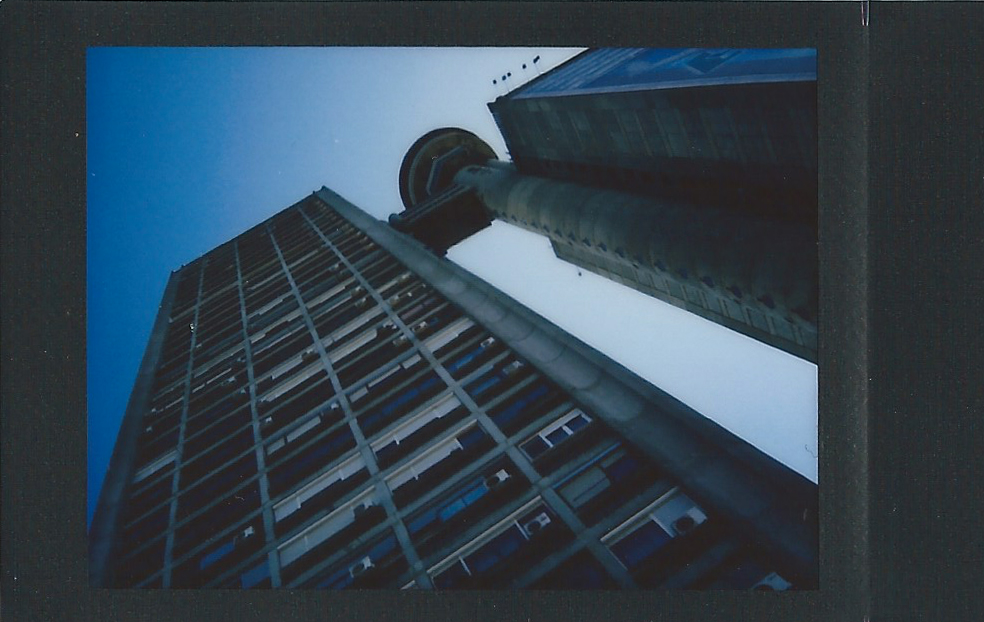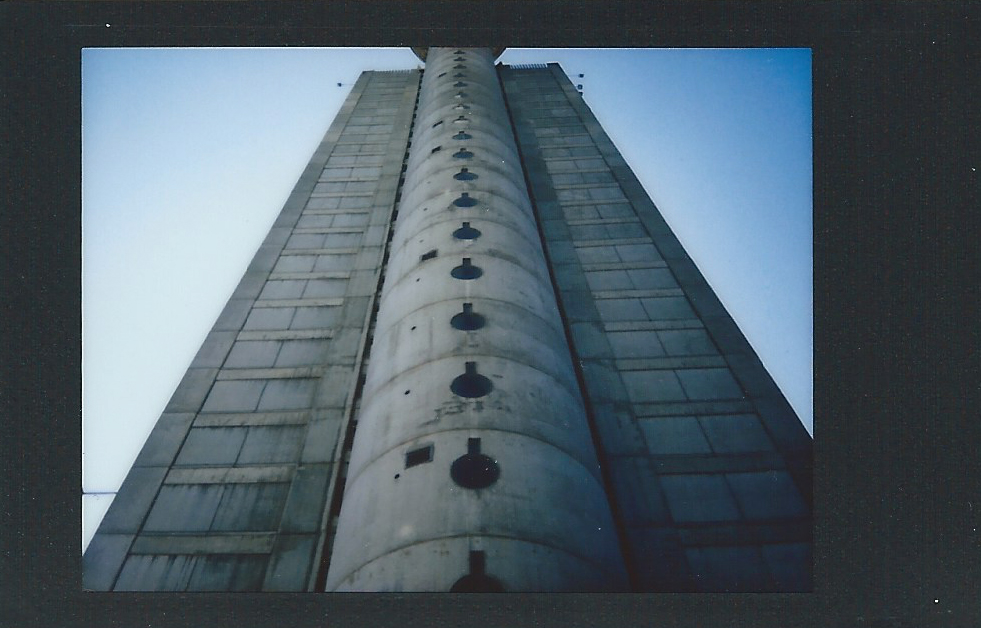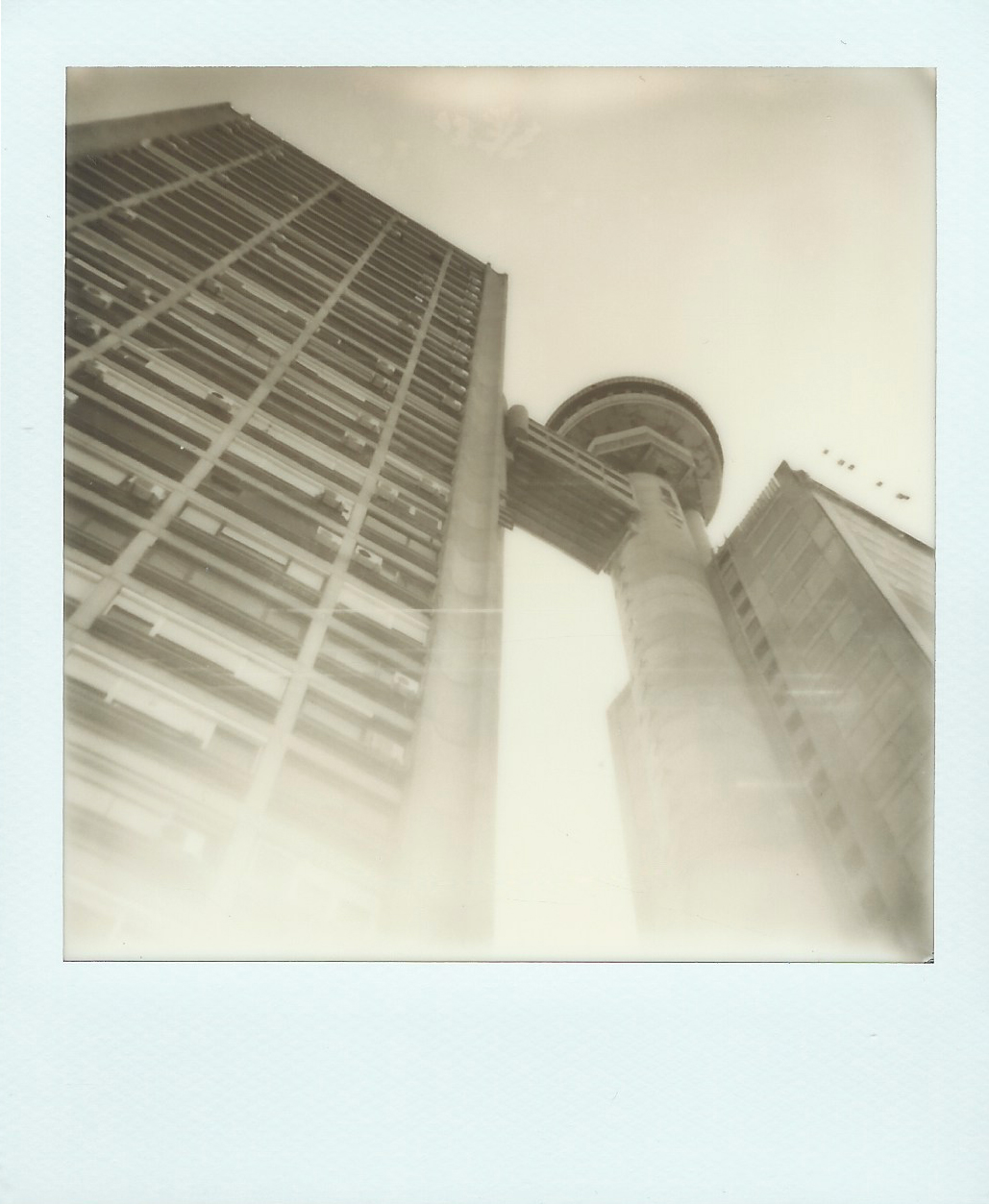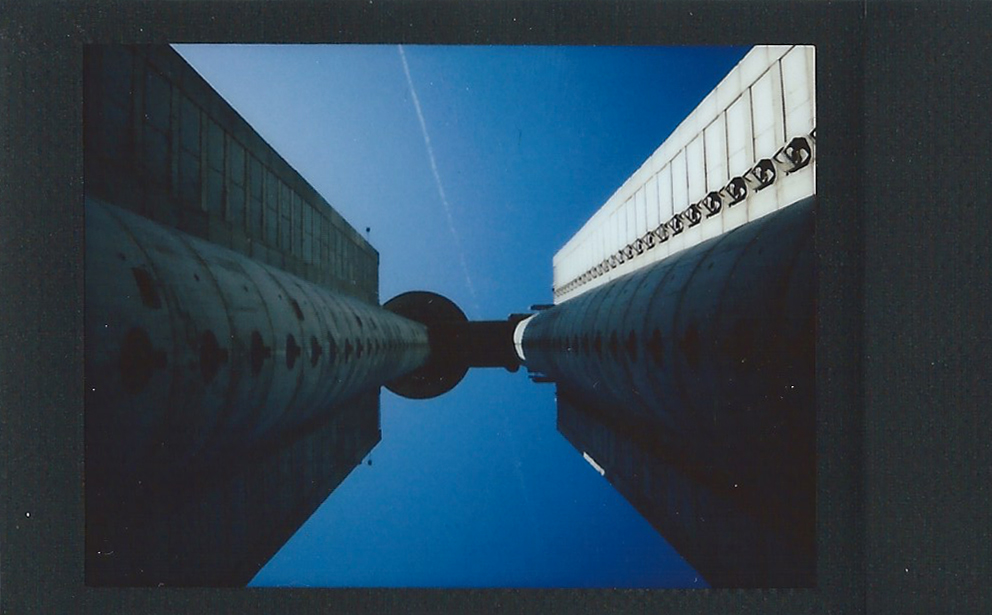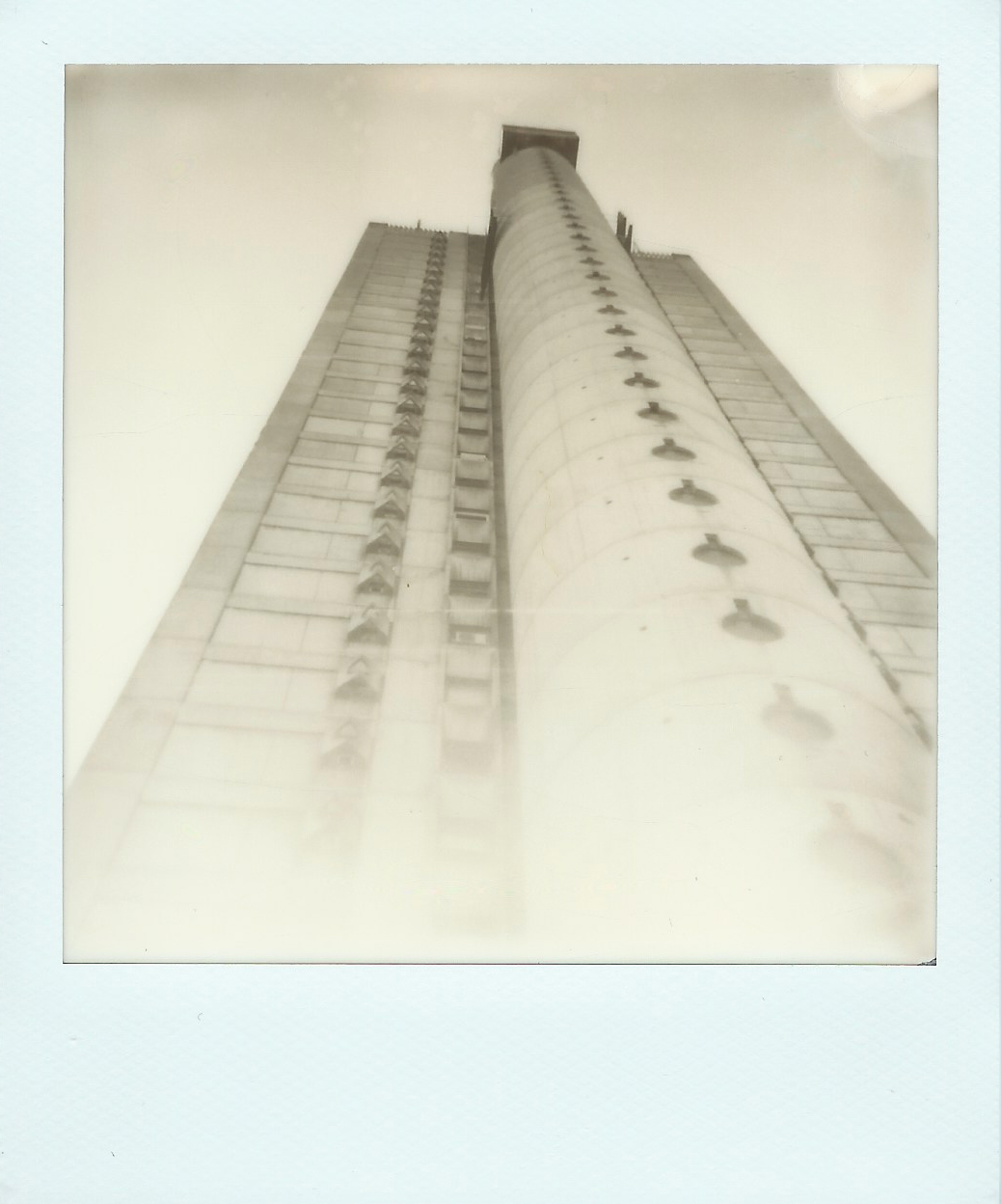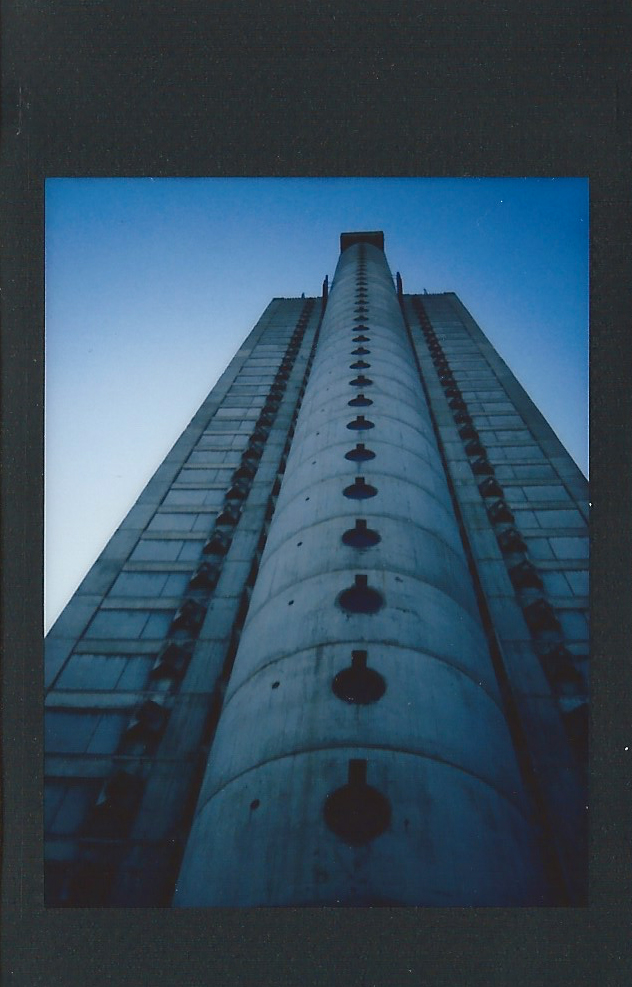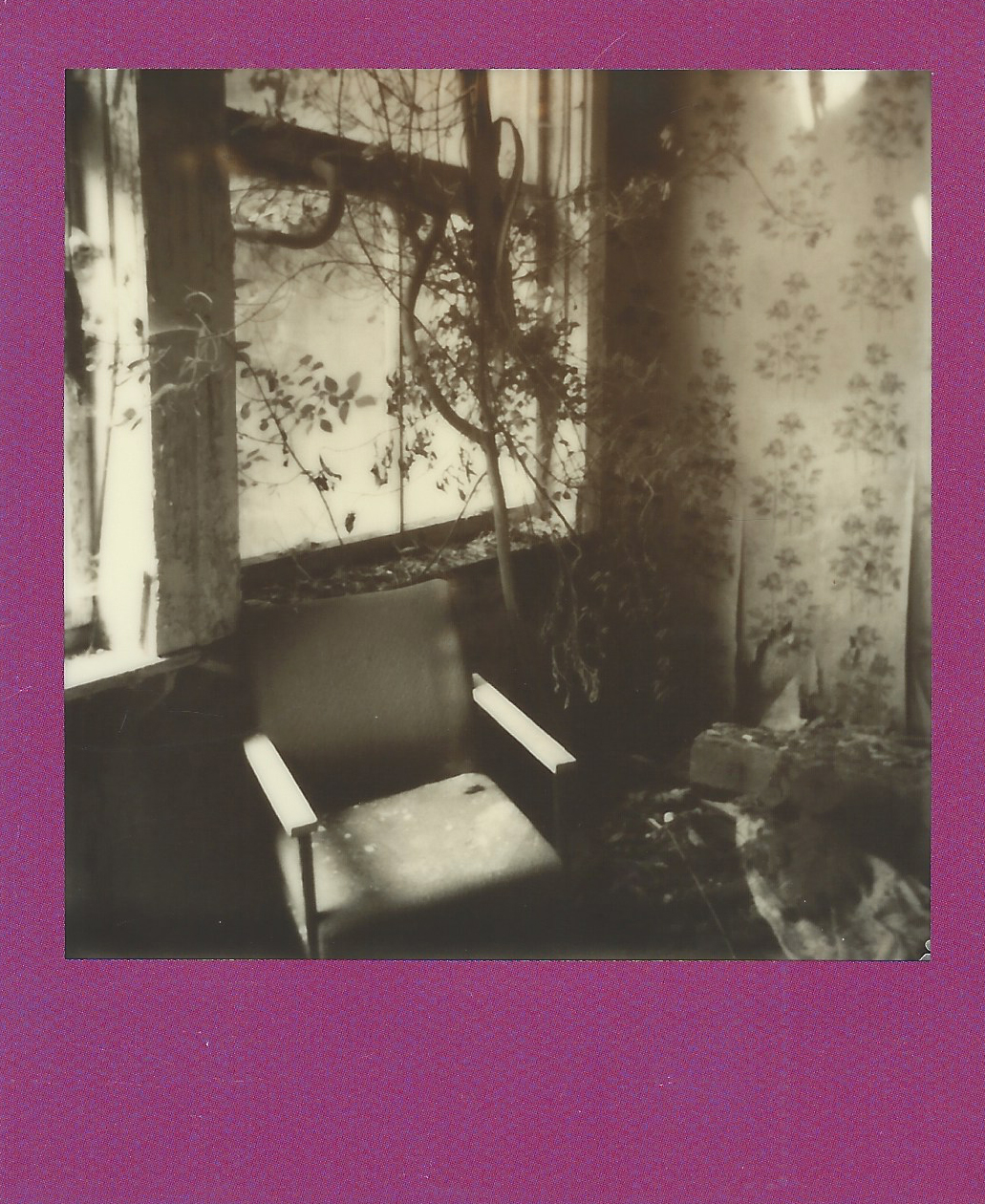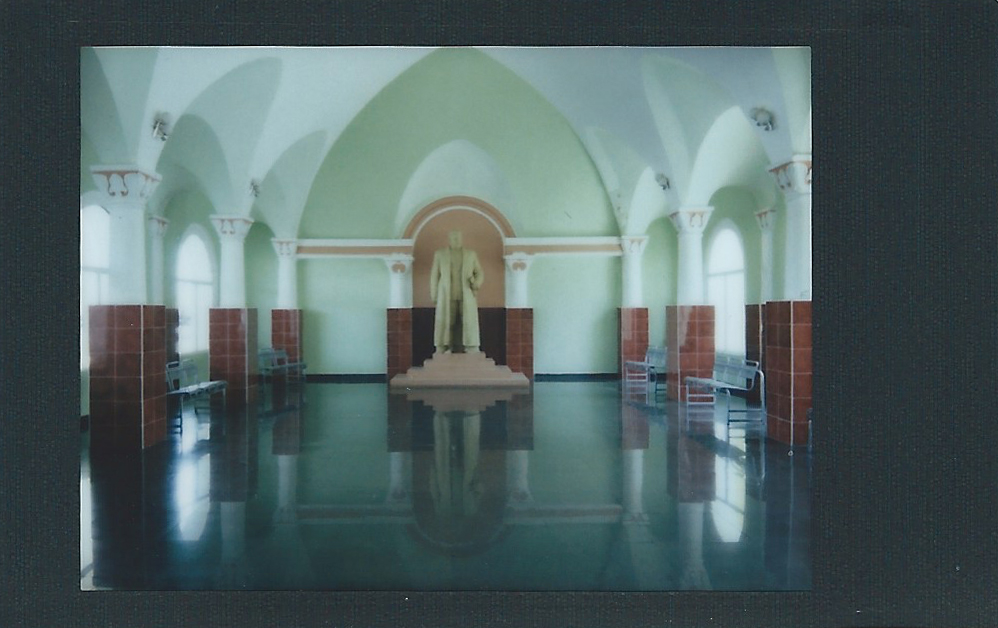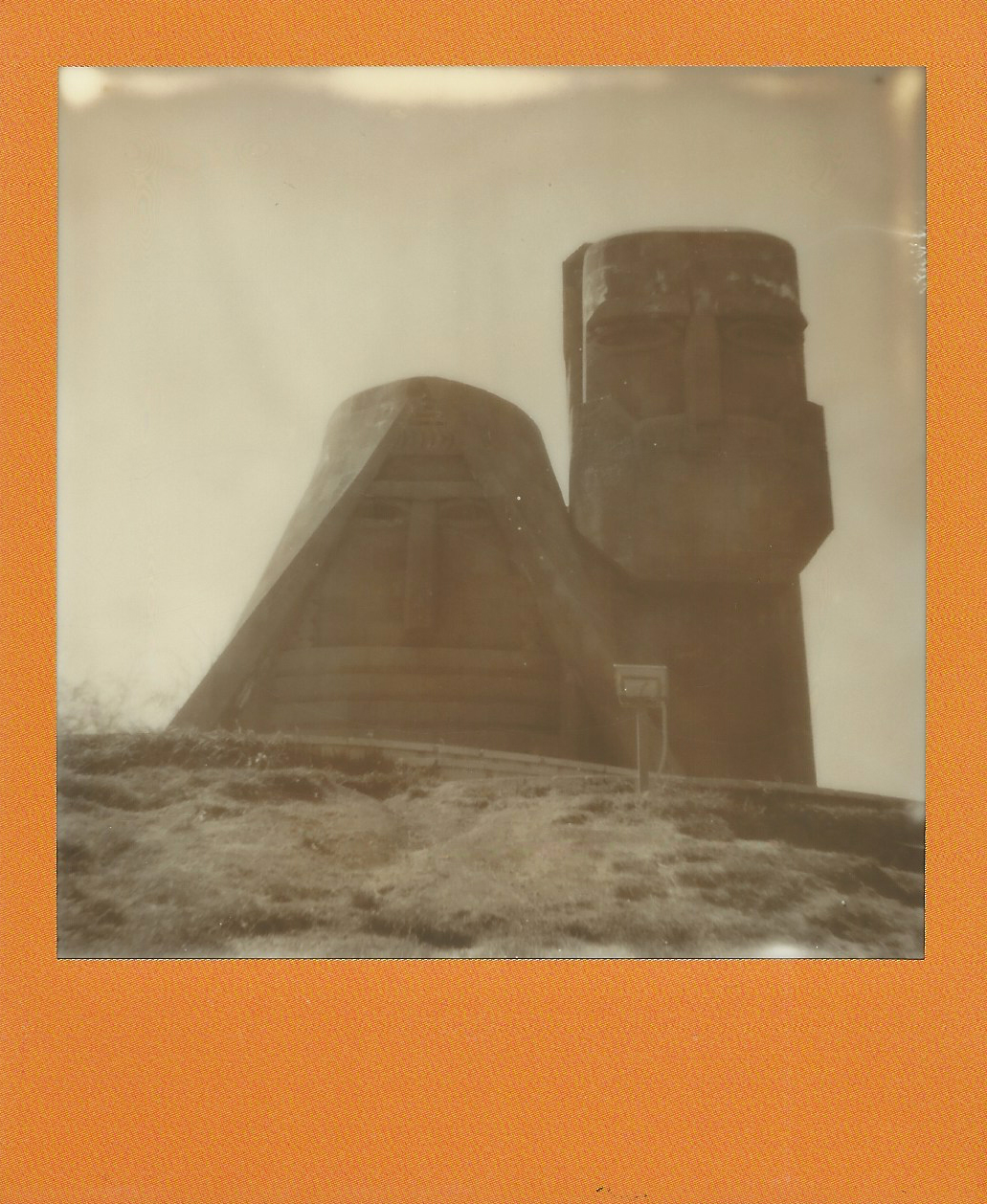Hotel Salyut – Kiev, Ukraine
Icon of Socialist Modernism in Kiev, the Salute hotel was designed by Ukrainian architect Abraham Miletsky (also known for his dramatic, odd Crematorium in the Park of Memory) and built on the right bank of the Dnepr river between 1982 and 1984.
Named after – and looking alike – a series of Soviet space stations, the building should have been several floors higher (hence the massive base) but bureaucratic issues led to a shortening.
A spiral ramp runs all along inside the cylindrical reinforced concrete shape, connecting the 89 rooms.
